
D-Link previously took a different approach to whole-home Wi-Fi system design with their Covr-3902 (see my review). Their latest Covr-C1203, however, returns to the more conventional design, with three palm-sized nodes which provide dual-band mesh Wi-Fi coverage throughout your whole home, covering an area up to 5000 square feet.
Just a quick recap: the Covr-3902 comprises a more powerful primary unit that looks like a traditional Wi-Fi broadband router, paired with a smaller extender unit to increase coverage area. They work together as one single Wi-Fi system. This has some benefits: the primary unit has more capable Wi-Fi reach using external antennas than the extender unit.
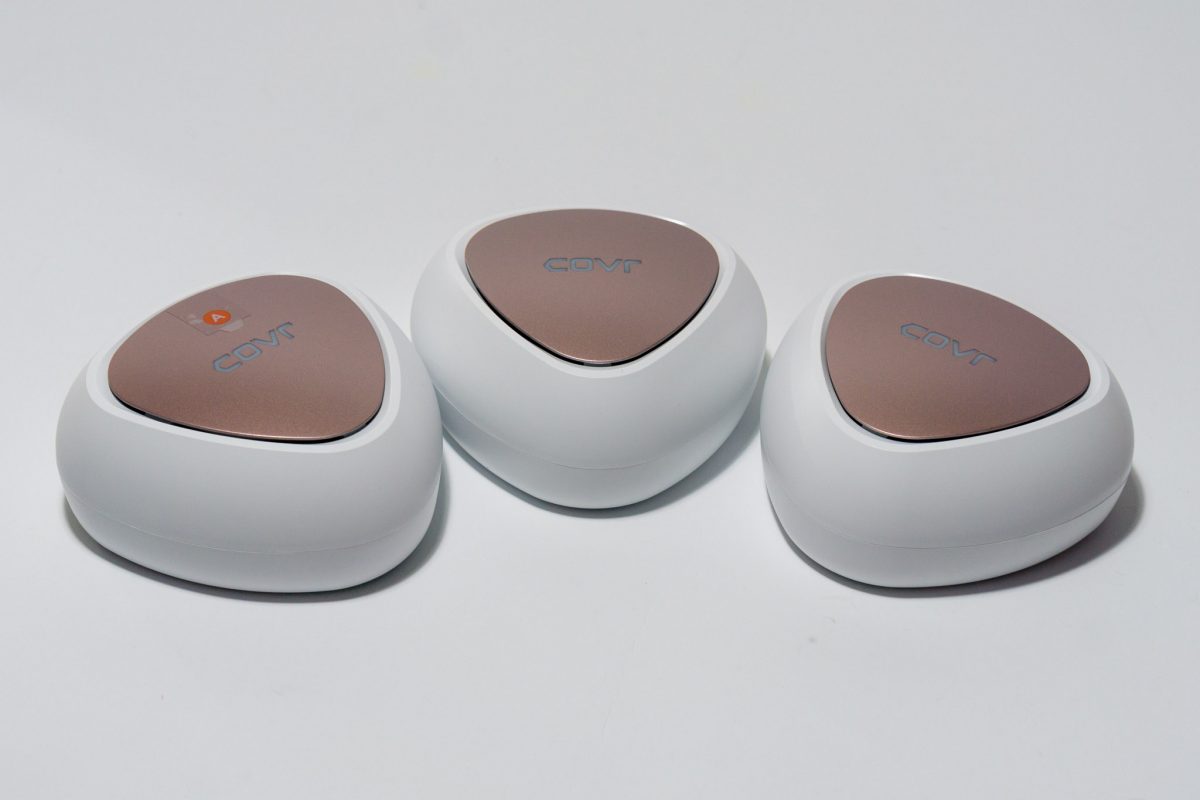
In the new D-Link Covr-C1203, each node looks identical. They each have a pleasant looking triangular chassis measuring 108 x 107.5 x 51 mm. However, they aren’t functionally completely the same. One of them has a sticker with an “A” on it. This is the main node, the one that must be setup first, and which must be connected to your Internet link. If you remove the sticker or somehow lose the sticker, the label on its underside will tell you which one is the “A” node. This isn’t a big deal, but just something you have to in mind when setting up the Covr-C1203.
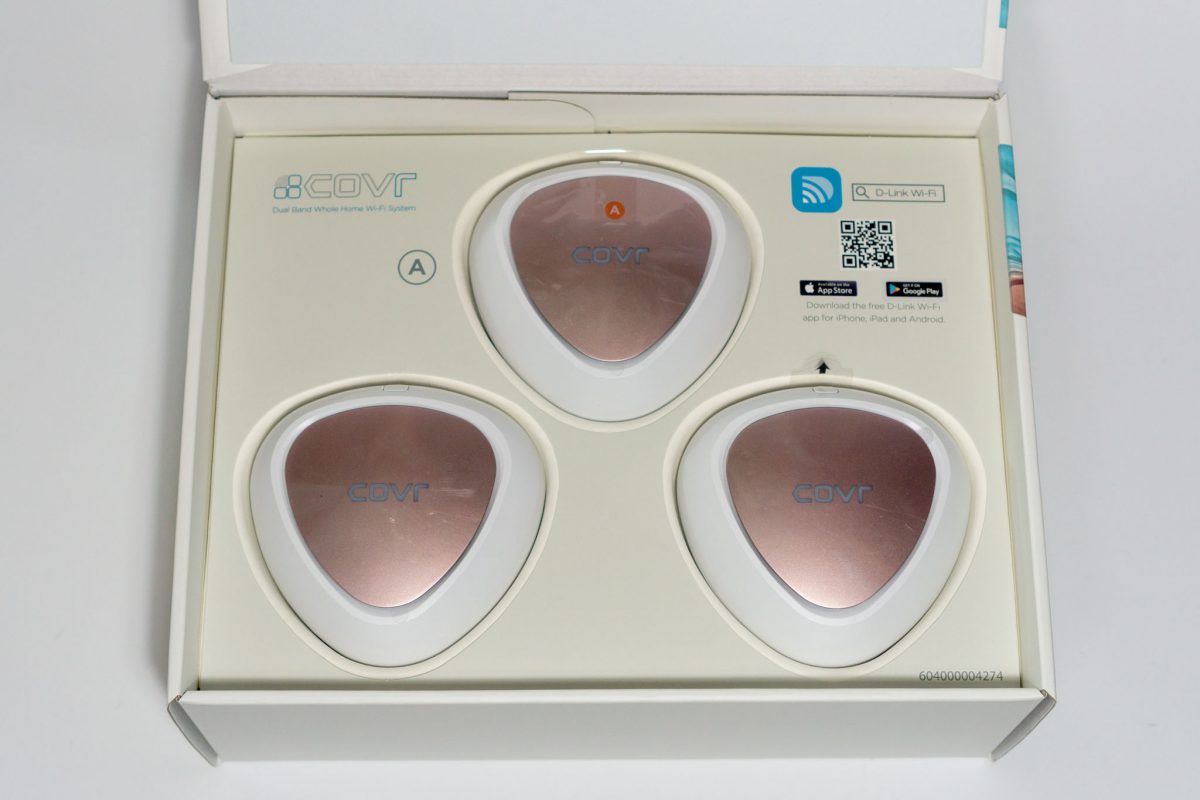
Each unit has two Gigabit Ethernet interfaces, and one USB Type-C port for power. I like the use of USB port for delivering power. It makes it much easier to replace or use another power supply in future. The Gigabit Ethernet interfaces serve several purposes: 1) Internet uplink on the “A” node; 2) connection to a wired LAN device; 3) wired backhaul to another Covr node. There’s also a WPS pairing button on the back of the Covr-C1203.
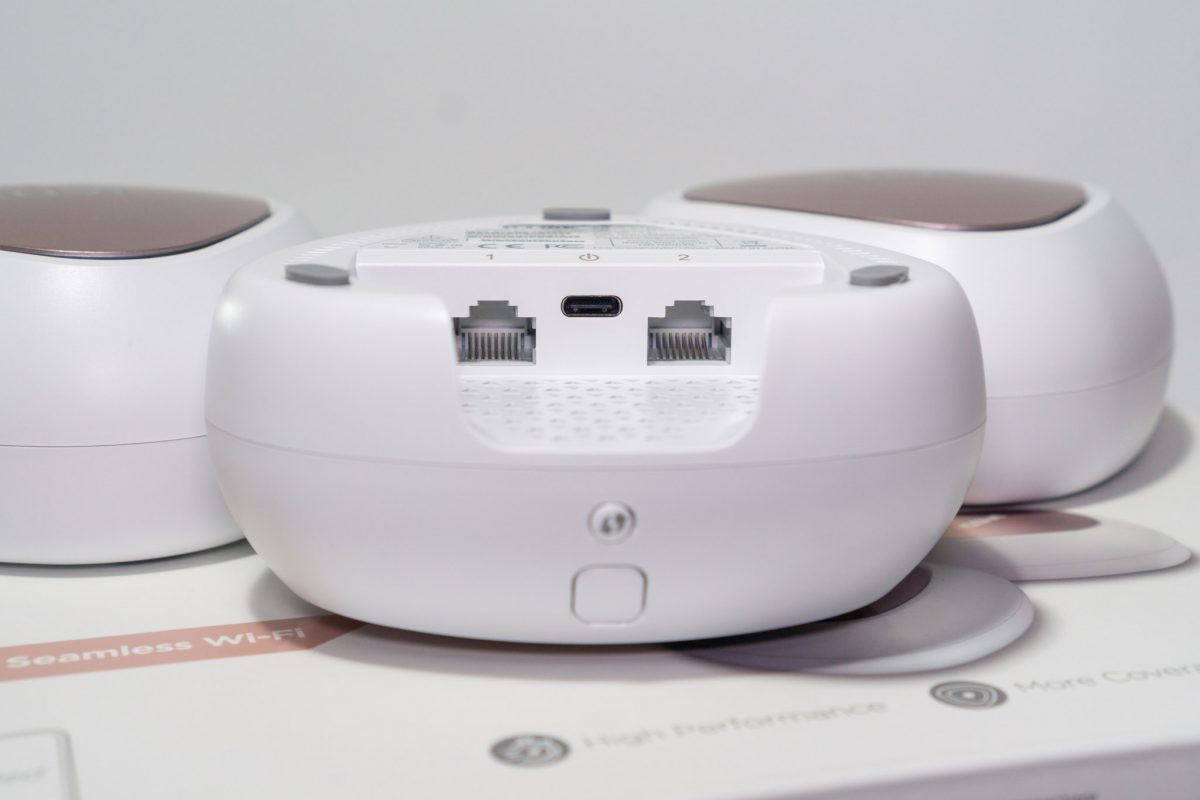
The D-Link Covr-C1203 is a dual-band device, so there is no dedicated third channel for Wi-Fi backhaul between the mesh nodes. The wired backhaul, hence, comes in useful, so your node-to-node communication doesn’t take up Wi-Fi bandwidth that can otherwise be used by your mobile devices.
This is important on the Covr-C1203, because its Wi-Fi speed isn’t terribly fast by today’s standard. It supports up to 866 Mbps on the 5 Ghz band and up to 300 Mbps on the 2.4 GHz band, giving it a AC1200 speed rating. It is decent, and extra speed may not be so important compared with having a better signal.
The D-Link Covr-C1203 supports Wi-Fi standards up to 802.11ac Wave 2. It has a 2×3 (tx/rx) internal antenna configuration with MU-MIMO capabilities. If all connected devices can support MU-MIMO, the Covr-C1203 will be able to transmit data to multiple devices simultaneously, increasing the total data throughput on your Wi-Fi network.
Setting up the D-Link Covr-C1203 is straight-forward. You have the option to use either their mobile app, available on both Android and iOS, or via a standard web browser. Many novice users may prefer using a mobile app, but some others like me prefer using a web browser. I like that Covr-C1203 offers the flexibility by supporting both methods.
I went with the web browser setup method, and I found it to be easy, not unlike any other well thought out broadband router setup. You do have to first connect to the Covr-C1203’s initial Wi-Fi network, which has a unique random password printed on a label on its underside, as well as on a convenient card.

Setting up using the mobile app is similar. Pick whichever method you prefer.
Adding the other two Covr-C1203 nodes to the first is extremely simple. There’s nothing to do, other than to simply turn them on. All the Covr-1203 units are pre-paired.
Like most whole-home mesh Wi-Fi systems, the Covr-C1203 software features are not very comprehensive. It does, however, have most things that casual home users will need. Briefly, the Covr-C1203 has:
- Handles both IPv4 and IPv6
- QoS: Includes the ability to drag-and-drop clients into priority levels in a graphical manner
- Firewall: Rules for IPv4 and IPv6; rules can be applied by device names (no need to know the IP addresses); application handling for protocols like SIP, RTSP and VPN passthrough
- Port-forwarding
- Website filtering
- Static routes for both IPv4 and IPv6
- DDNS support
The bright LED status indicator on top of the Covr-C1203 can be turned off. Like other mesh products, this is a global setting. I do wish this can be controlled on an individual device level.
The D-Link Covr-C1203 worked well in my home. I didn’t have any trouble using any of my mobile devices with the Covr-C1203’s network. I will post some benchmarks in a separate post. One feature I did wish the Covr-C1203 had was support for bridged mode, i.e., to connect the Covr-C1203 to an existing broadband router.
When you’re thinking about where in your home to place the Covr-C1203, you might like to know that the cover on top of each unit can be changed.
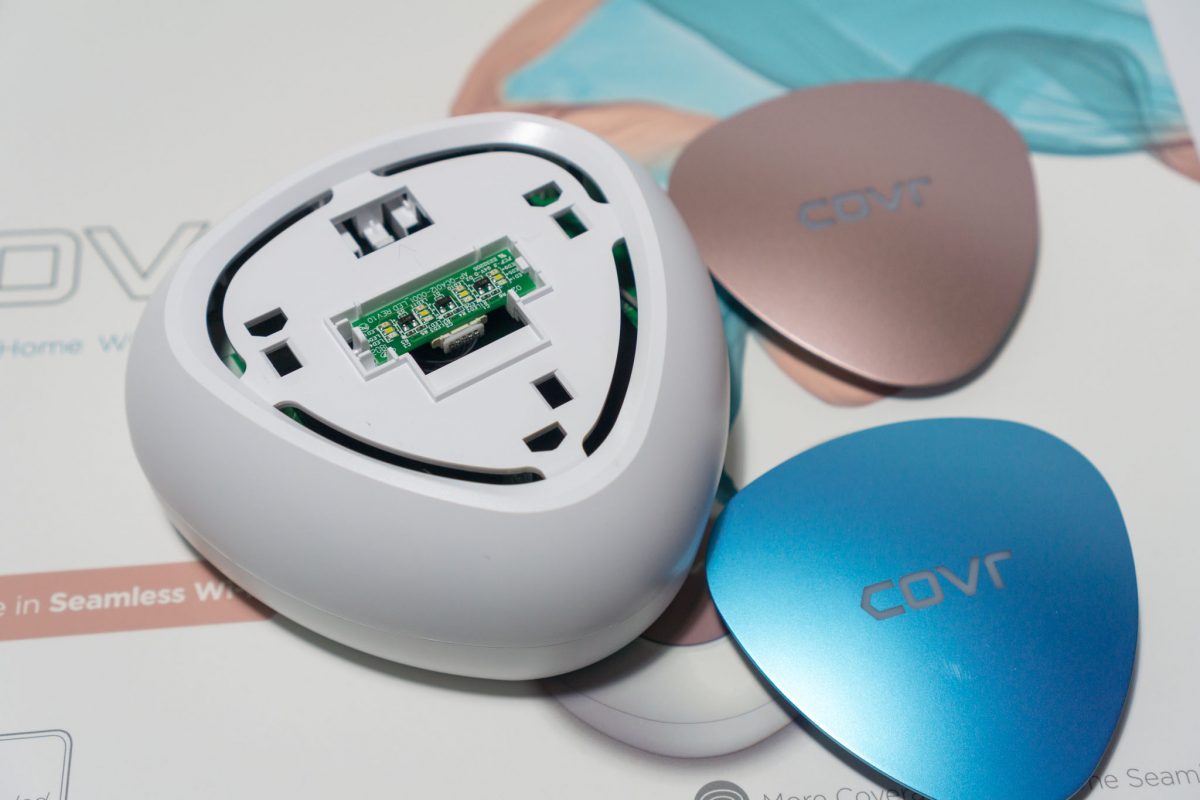
In case the pre-fitted Rose Gold coloured cover doesn’t work for you, you can swap with an Ocean Blue or a Gold cover, both included in the box. You can thus pick and choose whichever works best with your home decor. That’s not a whole lot of colours to choose, of course, but certainly better than not having any.
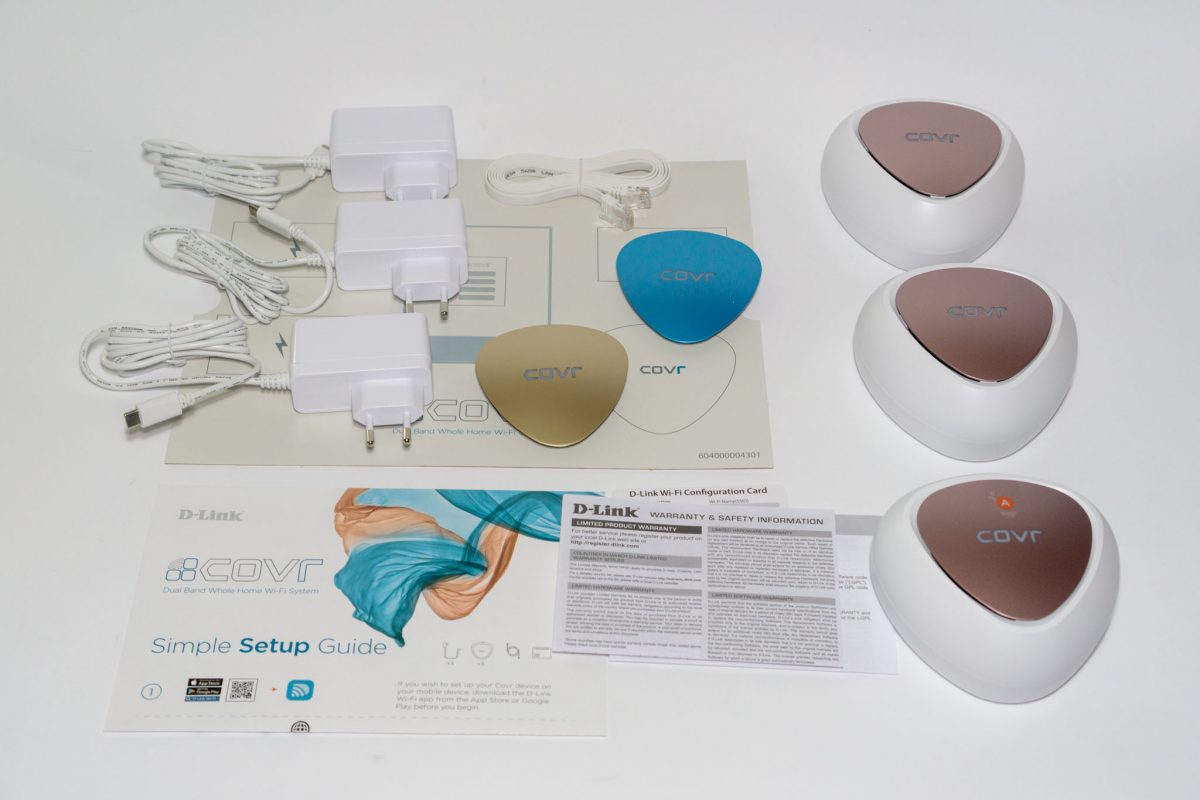
The D-Link Covr-C1203 comes in a three-pack box, with three USB-C power supplies, a RJ45 LAN cable, and some extra covers included within.
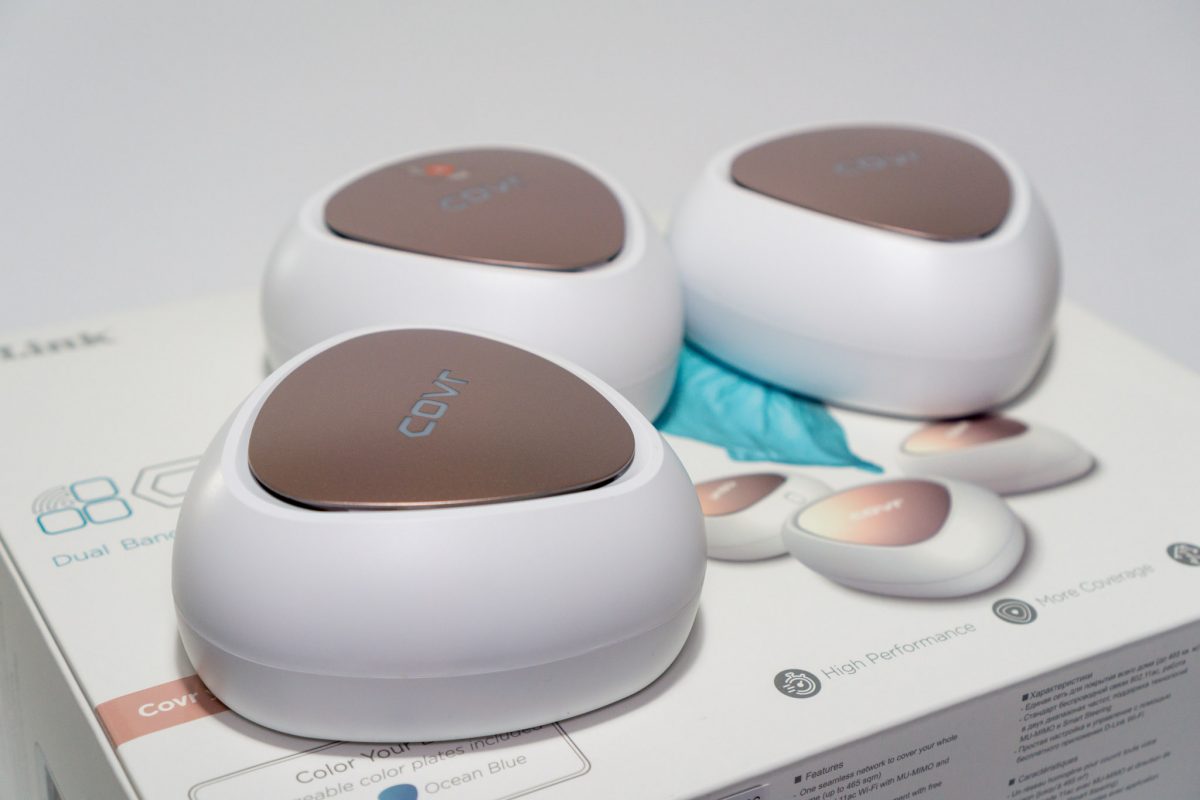
The official retail price of the D-Link Covr-C1203 is S$359, but you can often get it for less. For example, ValueClub members can get the Covr-C1203 at S$249 from Hachi.tech. This is a very affordable price for a three-node whole-home mesh Wi-Fi system.
Conclusion
The D-Link Covr-C1203 is a very affordable dual-band whole-home mesh Wi-Fi system that looks good and works great.
Pros:
- Easy to setup
- Pleasant design
- Two Gigabit Ethernet ports in each unit
- Wired backhaul option
Cons:
- No dedicated Wi-Fi backhaul
- Doesn’t work in bridge mode
View Comment Policy